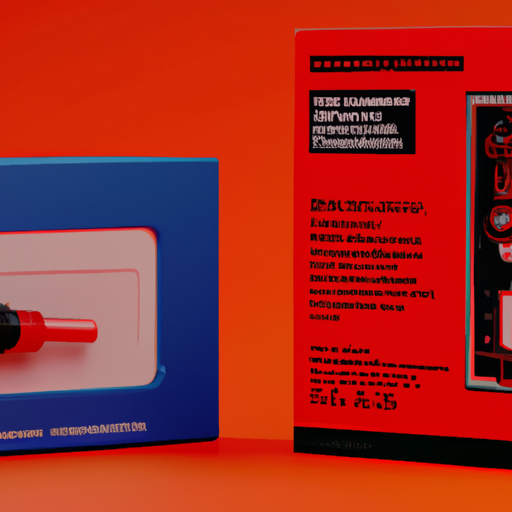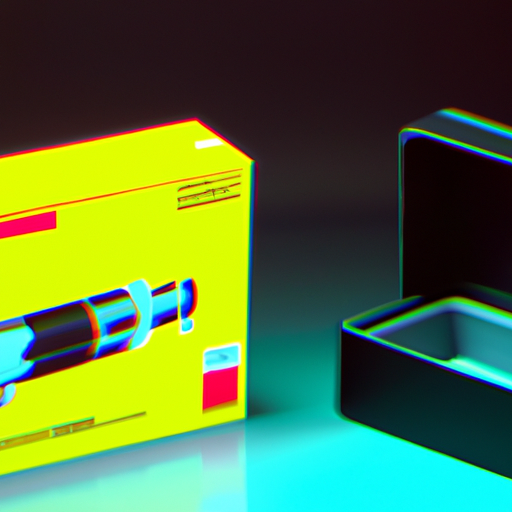
-
Table of Contents
- Package Design for Medical Devices: Precision and Safety
- The Significance of Package Design for Medical Devices
- Challenges in Package Design for Medical Devices
- Strategies for Effective Package Design
- 1. Collaboration between Designers and Engineers
- 2. Human-Centered Design Approach
- 3. Material Testing and Validation
- 4. Compliance with Regulatory Standards
- 5. Iterative Design Process
- Case Study: Package Design for Insulin Pens
- Conclusion
Package Design for Medical Devices: Precision and Safety

Medical devices play a crucial role in modern healthcare, aiding in the diagnosis, treatment, and monitoring of various medical conditions. These devices are often intricate and delicate, requiring precise packaging to ensure their safety and efficacy. In this article, we will explore the importance of package design for medical devices, the challenges faced in creating such designs, and the strategies employed to overcome them.
The Significance of Package Design for Medical Devices
Package design for medical devices is not merely about aesthetics; it is a critical aspect of ensuring the safety and effectiveness of these devices. The packaging serves multiple purposes, including:
- Protection: Medical devices are often fragile and sensitive to environmental factors such as temperature, humidity, and pressure. The packaging must provide adequate protection to prevent damage during transportation and storage.
- Sterility: Many medical devices need to maintain sterility until they are ready for use. The packaging must be designed to create a barrier against contaminants, ensuring the device remains sterile until it reaches the end-user.
- Information: The package serves as a means to convey important information to healthcare professionals and patients. It should include clear instructions for use, warnings, and any necessary regulatory information.
- Identification: Proper labeling and branding on the package help in identifying the device, its manufacturer, and its intended use. This is crucial for traceability and accountability.
Challenges in Package Design for Medical Devices
Designing packaging for medical devices comes with its own set of challenges. Some of the key challenges include:
- Regulatory Compliance: Medical devices are subject to strict regulations and standards imposed by regulatory bodies such as the Food and Drug Administration (FDA) in the United States. Package design must comply with these regulations, which can vary depending on the type of device and its intended use.
- Material Selection: Choosing the right materials for packaging is crucial to ensure the safety and integrity of the medical device. Factors such as compatibility, durability, and barrier properties must be considered when selecting materials.
- Size and Shape: Medical devices come in various shapes and sizes, and the packaging must be designed to accommodate these unique characteristics. The package should provide a secure fit to prevent movement and potential damage during transportation.
- Usability: The package should be user-friendly, allowing easy access to the device while maintaining sterility. It should be easy to open, close, and reseal if necessary.
- Cost: Balancing the need for precision and safety with cost-effectiveness is a challenge in package design. The materials, manufacturing processes, and design complexity can significantly impact the overall cost of packaging.
Strategies for Effective Package Design
To overcome the challenges mentioned above and ensure precision and safety in package design for medical devices, several strategies can be employed:
1. Collaboration between Designers and Engineers
Effective package design requires close collaboration between industrial designers and engineers. Industrial designers focus on the aesthetics and user experience, while engineers ensure the functionality and technical aspects of the packaging. By working together, they can create designs that are both visually appealing and technically sound.
2. Human-Centered Design Approach
Adopting a human-centered design approach helps in creating user-friendly packaging. Understanding the needs and limitations of healthcare professionals and patients is crucial. Conducting usability studies and gathering feedback can lead to improvements in the design, making it more intuitive and easy to use.
3. Material Testing and Validation
Thorough testing and validation of packaging materials are essential to ensure their compatibility with the medical device and their ability to maintain sterility. This includes evaluating the barrier properties, durability, and resistance to environmental factors. Conducting accelerated aging tests can simulate the effects of time on the packaging, ensuring its long-term effectiveness.
4. Compliance with Regulatory Standards
Complying with regulatory standards is non-negotiable in the medical device industry. Package design must adhere to the guidelines set by regulatory bodies to ensure patient safety and avoid legal issues. Regular audits and inspections can help identify any gaps in compliance and prompt necessary corrective actions.
5. Iterative Design Process
Package design is an iterative process that involves continuous improvement. Gathering feedback from end-users, healthcare professionals, and other stakeholders can provide valuable insights for refining the design. Regularly reviewing and updating the packaging design based on real-world usage can enhance its precision and safety.
Case Study: Package Design for Insulin Pens
Insulin pens are widely used by individuals with diabetes to administer insulin. The package design for insulin pens must address the specific needs of the users while ensuring the safety and integrity of the device. One successful example of package design for insulin pens is the NovoPen Echo®.
The NovoPen Echo® is a compact and user-friendly insulin pen designed for children and adults with diabetes. The package is designed to be child-resistant while maintaining ease of use for adults. The key features of the package design include:
- Clear Instructions: The package includes clear and concise instructions for use, making it easy for both children and adults to understand how to use the insulin pen safely.
- Color-Coded Dosing: The pen and its packaging are color-coded to help users easily identify the correct insulin dosage.
- Secure Fit: The package provides a secure fit for the insulin pen, preventing movement and potential damage during transportation.
- Child-Resistant Cap: The cap of the insulin pen is designed to be child-resistant, ensuring the safety of children who may come into contact with the device.
The NovoPen Echo® package design exemplifies the importance of considering user needs, safety, and ease of use in medical device packaging.
Conclusion
Package design for medical devices is a critical aspect of ensuring precision and safety. The packaging must protect the device, maintain sterility, provide necessary information, and aid in identification. Designing medical device packaging comes with challenges such as regulatory compliance, material selection, size and shape considerations, usability, and cost-effectiveness. By employing strategies such as collaboration between designers and engineers, human-centered design, material testing and validation, compliance with regulatory standards, and an iterative design process, precision and safety can be achieved in package design. Case studies like the NovoPen Echo® demonstrate the successful implementation of these strategies. Ultimately, effective package design plays a vital role in enhancing the overall quality and reliability of medical devices, contributing to improved patient outcomes and healthcare experiences.
</html
